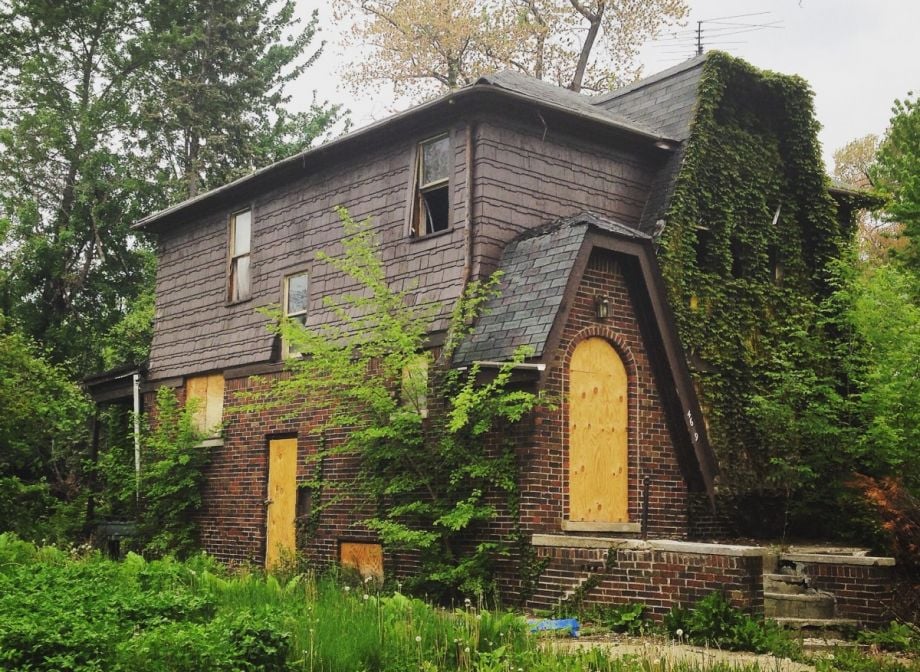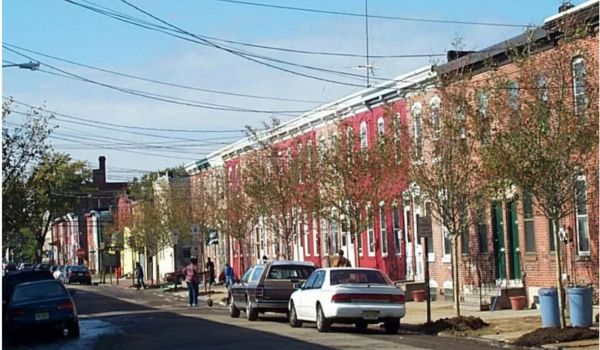They had to find a million people. Somehow. Anyhow.
In the late 1990s, in a dreary basement office in Detroit, Saskia Thompson pored over address lists and block-by-block maps of the city. As part of the planning department, her task was to use any source possible to find every occupied address on Detroit’s 11,000 blocks. Then she needed to make sure the U.S. Census Bureau knew about them.
It was no secret that Detroit had been shrinking for decades. From a peak of nearly 2 million people, every decennial count since 1960 had tracked an exodus from the city, typically to the outlying suburbs. The 1990 Census had Detroit’s population at 1,027,974, and even that only came after a recount.
If the population were to slip further in Census 2000, Detroit could become the first big city in the nation to decline to below the 1 million mark. Not only would such a fall bruise the city’s pride, but it would also expel Detroit from a number of federal aid programs.
The city did everything it could to keep its head above water. Mayor Dennis Archer began planning for the 2000 count four years ahead of time. The city budgeted for 13,000 lawn signs, 10,000 bumper stickers, television and radio ads, banners, a mural, and billboards near the expressways reminding people to mail in their census forms: “Detroit. All eyes are on you!”
And people like Saskia Thompson did the tedious work of tracking intact houses and addresses. A census supervisor would later say that he hadn’t seen a city “put in the kind of emotional energy and human resources that Detroit is investing [in the census effort] since the 1970s.”
But for all that, the people just weren’t there. The count came in at 951,270. Detroit officially had nearly half the population density as Chicago, and about 1,000 fewer people per square mile than Los Angeles.
Twenty years later, after a career in city government took her from Detroit to Charlotte, North Carolina, to Philadelphia, Saskia Thompson is poised to return to her hometown as the new executive director of the Detroit Land Bank Authority. She will be the fourth to lead the DLBA in as many years. It is the largest land bank in the U.S., with tens of thousands of vacant lots and houses in its inventory — the exoskeleton of the million-plus people who left. The authority means to restore them to productive use.
Their work has been avidly watched by the community, some who celebrate the opportunity to, for example, purchase the vacant side lot next to their house or bid on a house through an online auction. Others are skeptical, especially of the demolition program that is now under federal investigation, and also of the many faces DLBA presents to the community through different projects.
Michele Oberholtzer, coordinator of the United Community Housing Coalition’s tax foreclosure prevention program, wonders about the values that underlie DLBA “that all the individual projects should theoretically flow from … it’s not clear to me what that is. I’d like to see that translated and made visible.” She says that she hopes a new director could address that, especially given the immense scale of the land bank. As someone who focuses on occupied homes that are foreclosed upon, she worries that we “might miss out on a possible future for [individual] properties and then they’ll … be blighted beyond repair. It’s really important to find salvageable homes, especially occupied homes, and save them, and keep them occupied.” She believes that more transparency and more collaboration with community groups would benefit the DLBA.
From Detroit and Back
A lot has changed since Thompson last worked for the city of Detroit, but the core problem is the same: providing public services for a city built for more than twice as many people who live there. The difference now, as Thompson sees it, is that Detroit is realistic about where it stands. Rather than trying to scrounge up numbers, it is adapting, often in innovative ways. That includes the land bank, which was founded in 2008 and dramatically expanded its work in 2014, under Mayor Mike Duggan’s administration.
Thompson grew up in Rosedale Park in northwest Detroit. Her parents moved there in the late 1970s, choosing a home that was vacant before they arrived. For four years, Thompson rode the Grand River bus to attend Cass Tech, a magnet high school downtown. “Every year, the trip looked worse than the previous year,” Thompson recalls. “It was the late ’80s, and there was a lot of disinvestment in Detroit, and people moving out. I thought, ‘This shouldn’t be happening. We can do better.’”
That feeling was cultivated in a family committed to social issues. Her parents still live in the same Rosedale Park house. Her father was a professor of social theory and practice at the University of Michigan, and her mother worked downtown as a lawyer for workers’ rights. “I spent weekends puttering around her office and downtown,” Thompson says. “I didn’t think of [Detroit] as a system. It was just a place, and a place I cared about. I didn’t think about how systems work until I was older.”
While studying at the University of Illinois in Chicago, Thompson volunteered for three years as a tester for a housing organization, vetting what it was like for her, as a white woman, to try to rent an apartment compared to people who looked different. That deepened her understanding of the hidden structures of cities. She also studied enough urban planning to entice her to the graduate program in urban planning at the University of Michigan. Unlike many of her fellow students in Ann Arbor, most of whom were from small towns and suburbs, she wasn’t drawn to landscape architecture or project planning. “I knew I wanted to deal with more complex issues,” she says. So she went to work for the city of Detroit.
She left the city at the end of Mayor Archer’s administration and went on to spend the next nine years in Charlotte, directing the city manager’s office and managing the city council office. In North Carolina, it was also a challenge to deliver public services, but for the exact opposite reason as in Detroit: Charlotte was growing fast. “It could not have been more different than where I came from,” Thompson says. “It was a parallel universe.”
There, she felt that her experience in Detroit was discounted because “Detroit didn’t matter. It was a shrinking city so whatever they were doing it was wrong,” she says. But she notes that it wasn’t that long ago that Detroit was a boomtown too. “It could happen [there],” she says of Charlotte. “Maybe not in five to 10 years, but in 50.” She worries that a sense of exceptionalism would lead to missed opportunities for good public policy, the kind that could keep Charlotte stable even in the rough years — or rough decades.
“I don’t regret a minute” of working in Charlotte, Thompson says, “because I learned things there about my chosen profession that I could never learn” otherwise. But in 2011, she left to work for the city of Philadelphia as the deputy finance director and executive director of the Office of Property Data. Philly, she says, is like Detroit in that it is a city of neighborhoods. It’s the only other place she’s been where people ask where you went to high school.
Rather than the public-facing role she had in Charlotte, her job in Philly was to improve government internally. That meant breaking down silos, which often came down to technology and communications. Transferring information between departments about, for example, the billions of dollars of real estate that the city manages, was stunningly difficult. Improving these systems could make life better not only for city employees, but for residents.
Philly has a land bank too. Thompson helped develop its structure and authorizing legislation. But its scope, she says, is limited at this point. “It’s not as independent from city policies and politics as the Detroit land bank,” she says.
The opportunity to lead DLBA didn’t come at the most ideal time. Thompson’s daughter is about to enter her senior year. The land bank, besides managing a staggering volume of properties, is also in the midst of a federal investigation into its demolition program.
But, Thompson says, she was drawn to the position because the lank bank “ideally can make a tremendous amount of change in Detroit neighborhoods … not one or two lots on a block like what they’re talking about in Philly, but large areas of land in neighborhoods.”
Speaking a few days after accepting the job, Thompson declines to speak about DLBA’s specific programs. But she says that when she arrives in Detroit — she’s expected to begin work in September — she plans to “talk to anybody and everybody who has an opinion” on the land bank. “I want people to feel like they can ask me questions and they can challenge me,” she says.
When news broke about the Detroit appointment, Thompson says she was surprised to hear from everybody from the Cass Tech alumni association to people who remembered her from middle school. “Oh, we’re going back that far,” she exclaims.
She notes how most of the people reaching out to her did not work in city government. But they nonetheless knew the influential role that the Detroit land bank has in the city. “With the land bank in Philly, I don’t think people understand the significance of that,” she says. “In Detroit, people know.”

Anna Clark is a journalist in Detroit. Her writing has appeared in Elle Magazine, the New York Times, Politico, the Columbia Journalism Review, Next City and other publications. Anna edited A Detroit Anthology, a Michigan Notable Book. She has been a Fulbright fellow in Nairobi, Kenya and a Knight-Wallace journalism fellow at the University of Michigan. She is also the author of THE POISONED CITY: Flint’s Water and the American Urban Tragedy, published by Metropolitan Books in 2018.
Follow Anna .(JavaScript must be enabled to view this email address)







_600_350_80_s_c1.JPEG)








